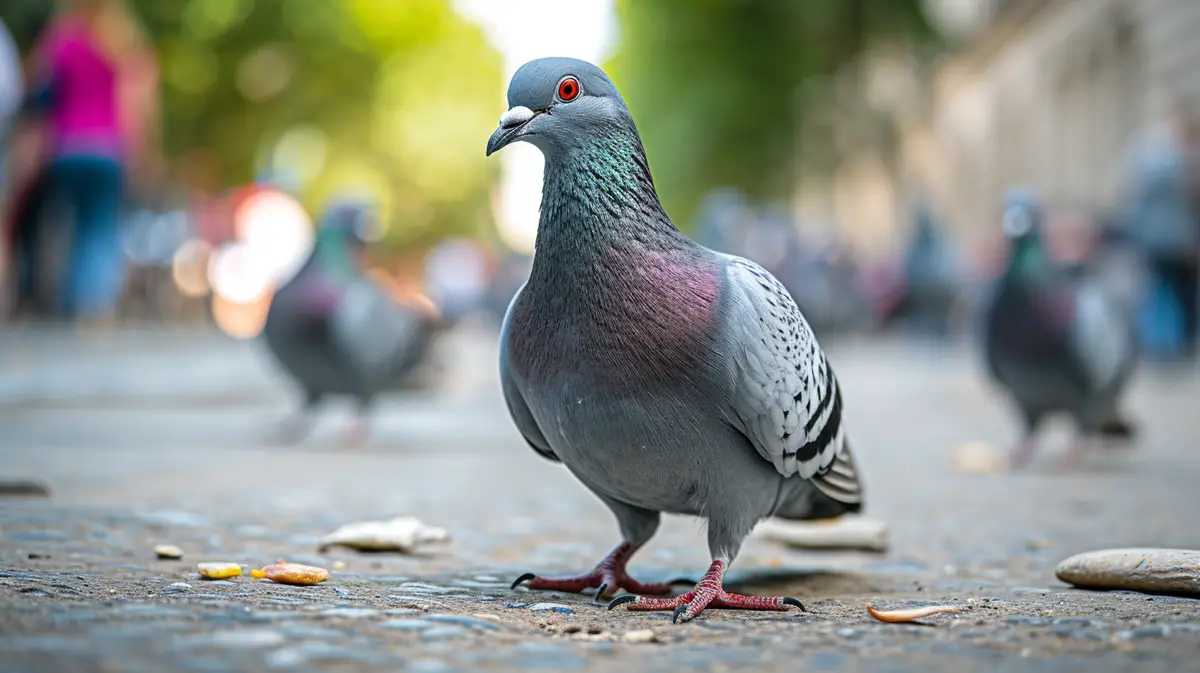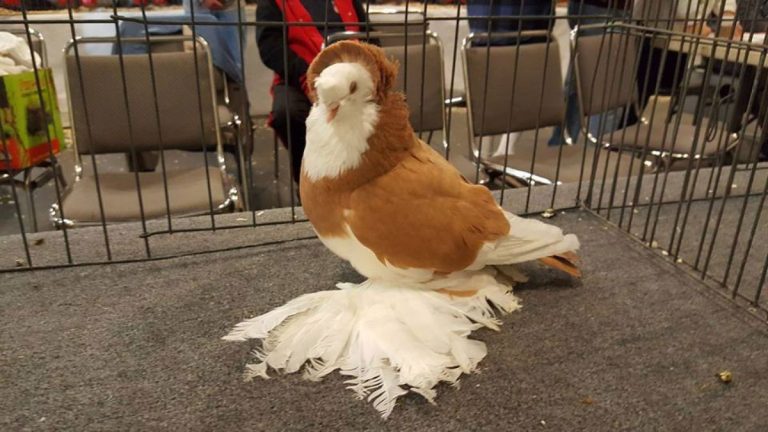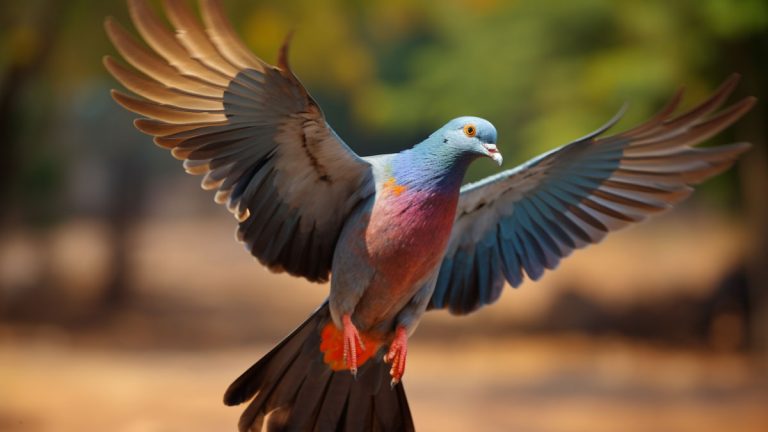Pigeon Vision: Exploring the Remarkable Visual System
Have you ever wondered what the world looks like through the eyes of a pigeon? These seemingly ordinary birds possess an extraordinary visual system that allows them to navigate complex environments with ease. In this article, I’ll take you on a fascinating journey into the realm of pigeon vision, exploring the unique features and capabilities that make it so remarkable.
Pigeons, often dismissed as mere city dwellers or carriers of messages, have a visual system that rivals even the most advanced technology. Their ability to perceive the world around them is nothing short of awe-inspiring. From their exceptional depth perception to their remarkable color vision, pigeons possess a visual acuity that puts many other species to shame.
But what sets pigeon vision apart from our own? How do these birds perceive the world differently, and what advantages does it give them in their daily lives? Join me as we delve into the intricacies of pigeon vision, unraveling the mysteries behind their extraordinary visual abilities. Get ready to see the world through a whole new set of eyes – the eyes of a pigeon.
The Extraordinary Visual System of Pigeons
Pigeons, those common urban birds we see in cities around the world, have a visual system that is nothing short of extraordinary. In fact, their visual abilities rival even the most advanced technology. Let’s explore the unique features and capabilities of pigeon vision, and discover how it sets them apart.

Incredibly Wide Field of View
One key aspect of pigeon vision is their incredibly wide field of view. While humans have a field of view of around 180 degrees, pigeons have a panoramic field of view of about 340 degrees. This means they can see almost all around them without having to turn their heads. It’s like having eyes on the sides of their heads!
Exceptional Color Vision
Pigeons not only have a wider field of view but also possess exceptional color vision. While humans have three color receptors in their eyes (red, green, and blue), pigeons have an additional fourth receptor that allows them to see ultraviolet light. This means they can perceive colors that are invisible to us. It’s like they have a whole new dimension of colors in their world!
Heightened Depth Perception
Another remarkable feature of pigeon vision is their heightened depth perception. Thanks to the position of their eyes on the sides of their heads, pigeons have a greater overlap in their visual fields. This overlapping vision provides them with excellent depth perception, allowing them to accurately judge distances and navigate through complex environments effortlessly.
Incredible Visual Memory
Pigeons have an incredible visual memory that allows them to remember and recognize landmarks over long distances. They use this ability to navigate and find their way home from unfamiliar locations. This makes them expert homing pigeons, capable of delivering messages to far-off destinations with astonishing accuracy.
Advanced Motion Detection
Pigeons’ visual system is finely tuned for detecting motion, making them highly skilled at spotting even subtle movements in their surroundings. This ability to detect motion helps them avoid predators and navigate through busy city environments. It’s like having built-in motion sensors!
Depth Perception: A Pigeon’s Secret Weapon
When it comes to navigating their surroundings, pigeons possess a remarkable ability that sets them apart from humans – depth perception. This visual skill plays a vital role in their everyday lives, enabling them to move with precision and accuracy.

Depth Perception Explained
Depth perception is the ability to perceive the distance and three-dimensional aspects of objects in the environment. It allows pigeons to judge the distance and location of objects accurately, making their flight paths efficient and their landings precise.
Binocular Vision
One of the key factors contributing to a pigeon’s depth perception is its binocular vision. Pigeons, just like humans, have eyes positioned at the front of their heads. This arrangement allows their eyes to overlap, giving them a wider field of view and enhancing their depth perception.
Visual Cues
To estimate the distance to an object, pigeons rely on various visual cues. One important cue is the relative size of objects. By comparing the size of known objects to the size of unknown objects, they can determine how close or far away something is. Texture gradient, motion parallax, and occlusion are other visual cues that pigeons utilize to perceive depth accurately.
Monocular Vision
While binocular vision certainly contributes to a pigeon’s depth perception, it’s important to note that they are not solely dependent on it. Pigeons can also use monocular cues to gauge distance. For instance, shadows and aerial perspective provide them with valuable depth information. By using both binocular and monocular cues together, pigeons create a comprehensive and detailed perception of their environment.
The Advantages of Depth Perception
Depth perception gives pigeons an edge in various aspects of their lives. One notable advantage is their ability to navigate through complex environments such as dense urban areas. The accuracy of their depth perception allows them to maneuver between buildings, trees, and other obstacles effortlessly. Additionally, depth perception plays a significant role in their foraging behavior, helping them identify and reach food sources efficiently.
Depth perception serves as a secret weapon for pigeons, enabling them to navigate their surroundings effectively. Their binocular and monocular vision, combined with the interpretation of visual cues, allows them to perceive depth with astonishing accuracy. By harnessing this remarkable skill, pigeons can conquer the skies and conquer our admiration.
Color Vision: Beyond the Rainbow

When it comes to vision, pigeons are no ordinary birds. Their remarkable visual system allows them to perceive colors in ways that surpass our human capabilities. Let’s dive into the fascinating world of pigeon color vision and explore what lies beyond the rainbow.
Pigeons have an extraordinary ability to see a wider spectrum of colors than we can. While humans have three types of color receptors, pigeons have an additional fourth type. This means that they can see colors that are invisible to us, such as ultraviolet (UV) light. This UV vision is especially useful for pigeons in various aspects of their lives, from finding food sources with UV-reflective properties to identifying potential mates with vibrant UV markings.
Another intriguing aspect of pigeon color vision is their ability to discriminate between different hues and shades. They can perceive subtle color variations that might appear the same to us. This enhanced color perception aids pigeons in identifying objects, tracking movements, and recognizing landmarks within their environment. It’s like they have their own technicolor world!
Furthermore, pigeons can even show preferences for specific colors. Studies have demonstrated that they can be trained to associate certain colors with rewards or punishments. This ability showcases their cognitive flexibility and understanding of color concepts.
To top it all off, pigeons have an impressive ability to remember and recall colors. Their visual memories enable them to recognize familiar color patterns and make associations, even after long periods of time. This skill proves invaluable for pigeons as they navigate and survive in their complex urban environments.
Pigeon Vision vs. Human Vision: How Do They Differ?
When it comes to visual abilities, pigeons and humans are quite different. As a pigeon, my vision allows me to perceive things in a unique way that sets me apart from humans. Let’s explore some of the key differences between pigeon vision and human vision.
- Field of View:
Pigeons like me have an incredible 340-degree field of view, while humans only have about 180 degrees. This means that I can see a much wider area without having to turn my head. It helps me keep an eye out for predators and navigate my surroundings with ease. Think of it as having panoramic vision all the time! - Color Perception:
While humans have a diverse range of color vision, pigeon vision takes it to the next level. Pigeons can see a wider spectrum of colors than humans, including ultraviolet (UV) light. In fact, I can perceive colors that are subtle and difficult for humans to distinguish. This heightened color perception helps me identify objects, spot food sources, and even recognize landmarks. - Motion Detection:
Another fascinating difference between pigeon vision and human vision is our ability to detect motion. Pigeons, like me, have advanced motion detection capabilities. We can easily spot the slightest movement, allowing us to react quickly to potential threats or changes in our environment. This skill is crucial for survival in the wild. - Depth Perception:
Pigeons have an exceptional sense of depth perception. Our eyes are uniquely positioned on the sides of our heads, enabling us to have a binocular overlap of nearly 20 degrees. This overlap allows us to accurately judge distances and perceive depth, which is particularly useful for tasks such as landing and navigating obstacles.
It’s important to note that although pigeons and humans have different visual abilities, both are valuable in their own ways. While humans excel in areas like color discrimination and fine details, pigeons like me have specialized skills that help us thrive in our natural habitats.
Now that we’ve explored some of the differences between pigeon vision and human vision, you can see just how remarkable and unique our visual system truly is. Keep in mind that the world looks very different through my eyes as a pigeon, and it’s fascinating to think about the diverse ways different species perceive the world around them.
The Advantages of Pigeon Vision in Daily Life
When it comes to their vision, pigeons have some incredible advantages that make them well-adapted for daily life. Let’s take a closer look at the advantages of pigeon vision and how it benefits them in their day-to-day activities.

Wide Field of View
One of the remarkable advantages of pigeon vision is their wide field of view. Unlike humans who have a limited field of view, pigeons can see almost 360 degrees without moving their heads. This allows them to have a complete view of their surroundings, making it easier for them to detect potential threats or sources of food.
Advanced Motion Detection
Pigeons also have advanced motion detection capabilities, which gives them an upper hand when it comes to spotting moving objects. Their visual system is highly attuned to detecting even the slightest movements, whether it’s a predator approaching or a potential mate flying by. This ability helps them navigate their environment and stay alert to any changes happening around them.
Exceptional Depth Perception
Pigeons possess exceptional depth perception, allowing them to accurately judge distances between objects in their environment. This is crucial for them to navigate safely, especially when flying through narrow gaps or landing on perches. Their ability to quickly and accurately assess depth helps them avoid collisions and move with agility.
Unparalleled Visual Memory
Another advantage of pigeon vision is their remarkable visual memory. Pigeons have the ability to remember specific visual cues and landmarks, even over long periods of time. This enables them to navigate and return to familiar locations with great accuracy. Their visual memory is a valuable tool for finding their way back to their nests or locating food sources, making them highly adapted to their urban habitats.
Pigeon vision offers a range of advantages that are well-suited for their daily life. Their wide field of view, advanced motion detection, exceptional depth perception, and unparalleled visual memory all contribute to their survival and success in their environment. By understanding the unique abilities of pigeons, we can appreciate the diversity of visual systems in nature.
Conclusion
Pigeon vision is truly remarkable, offering a range of visual abilities that are essential for their daily life and survival. Their wide field of view allows them to have a complete view of their surroundings, enabling them to spot any potential threats or opportunities. Additionally, their advanced motion detection capabilities ensure that they can quickly identify and track moving objects, giving them a distinct advantage in their environment. Pigeons’ exceptional depth perception allows them to accurately judge distances, helping them navigate their surroundings with ease. Lastly, their unparalleled visual memory enables them to remember specific visual cues and landmarks, aiding in their navigation and homing abilities.
These unique visual abilities make pigeons well-suited for their daily life, allowing them to thrive and succeed in their environment. By harnessing their wide field of view, advanced motion detection, exceptional depth perception, and incredible visual memory, pigeons are able to adapt and survive in various situations. Understanding the intricacies of pigeon vision not only sheds light on their fascinating abilities but also highlights the incredible diversity of visual systems in the animal kingdom.






